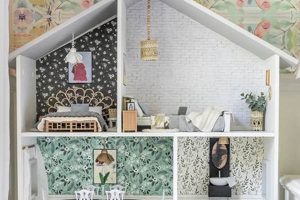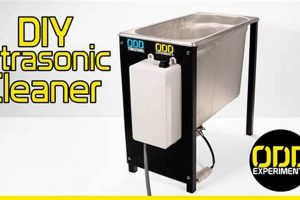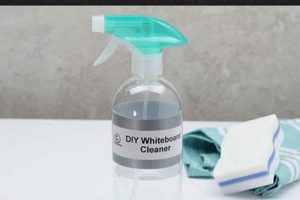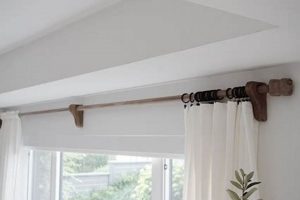Creating one’s own headwear for the Kentucky Derby offers an avenue for personal expression and cost-effectiveness. This process involves the construction of unique and often elaborate hats designed to be worn at the annual horse race, emphasizing individual style and creativity. Examples range from simple straw hats adorned with ribbons and flowers to more complex designs incorporating feathers, netting, and various embellishments.
The practice provides several advantages, including substantial cost savings compared to purchasing pre-made hats, particularly those of high-end design. Moreover, it enables wearers to craft pieces that perfectly complement their outfits and reflect their personal aesthetic, offering a level of customization unattainable through retail options. Historically, hats have been an integral part of Derby fashion, signifying elegance and tradition. The contemporary iteration allows participants to actively engage in this tradition by crafting their own statement pieces.
Subsequent discussion will explore the various materials and techniques employed in constructing these personalized accessories. This includes a survey of commonly used bases, decorative elements, and methods for securing these components to create a structurally sound and visually appealing final product. Specific considerations for design elements, such as color coordination and proportion, will also be addressed.
Essential Construction Guidelines
The following guidelines provide essential considerations for individuals undertaking the creation of custom headwear for the Kentucky Derby. Adherence to these points will aid in the production of a stable, aesthetically pleasing, and durable final product.
Tip 1: Secure Base Selection: Begin with a hat base appropriate to the intended design. Straw, felt, or sinamay bases offer varied structural properties and aesthetic qualities. Prioritize a base that comfortably fits the wearer and provides ample surface area for embellishments.
Tip 2: Structural Integrity: Reinforce attachment points for all decorative elements. Use millinery wire or heavy-duty thread to secure larger features like feathers or substantial floral arrangements, ensuring they remain stable throughout the event.
Tip 3: Adhesion Optimization: Employ appropriate adhesives based on the materials being joined. Fabric glue works well for ribbons and smaller fabric elements, while a stronger adhesive, such as hot glue (used judiciously), may be necessary for heavier or more rigid components.
Tip 4: Proportion and Balance: Maintain a visual equilibrium in the design. Overly large or disproportionate embellishments can overwhelm the base and detract from the overall aesthetic. Consider the wearer’s height and frame when determining the scale of the hat.
Tip 5: Color Harmony: Coordinate the colors of the hat with the intended outfit. Employ a color wheel to identify complementary or analogous color schemes. Limit the number of dominant colors to avoid a cluttered appearance.
Tip 6: Edge Finishing: Ensure all raw edges are neatly finished. Use bias tape, ribbon, or fabric glue to prevent fraying and create a polished appearance. A clean edge contributes significantly to the overall impression of quality.
Tip 7: Placement Considerations: Test the placement of the hat before final adhesion. Ensure it sits comfortably and securely on the head without obstructing vision or causing discomfort. Adjust the position of the elastic or comb to achieve optimal fit.
These guidelines emphasize the importance of structural soundness, aesthetic balance, and attention to detail. Successful implementation of these techniques will result in a refined and enduring headpiece appropriate for the Kentucky Derby.
The following section will address common errors and potential challenges encountered during the creation process, offering solutions to ensure a successful outcome.
1. Base Material Selection
The selection of the foundational material constitutes a critical initial phase in the creation of custom headwear intended for events such as the Kentucky Derby. This decision directly influences the structural integrity, aesthetic characteristics, and overall durability of the finished product. A thorough understanding of available materials and their properties is therefore essential.
- Structural Rigidity and Form
Base materials dictate the hat’s shape and its capacity to maintain that form. Materials like stiffened sinamay or buckram provide substantial structure, allowing for elaborate and sculptural designs. Conversely, more pliable materials such as straw or felt offer greater flexibility, suitable for softer, more flowing silhouettes. The chosen material must be capable of supporting the weight and configuration of applied embellishments.
- Aesthetic Compatibility
The inherent texture and appearance of the base material contribute significantly to the overall aesthetic of the hat. Natural straw conveys a rustic elegance, while silk or velvet bases project a more formal and luxurious image. The material should harmonize with the intended embellishments, both in terms of color and texture, to create a cohesive visual effect. For instance, pairing coarse burlap with delicate lace may create undesirable textural dissonance.
- Workability and Manipulation
Different materials possess varying degrees of ease in terms of cutting, shaping, and sewing. Sinamay, while strong, can be challenging to manipulate into intricate shapes. Felt offers greater malleability, allowing for easier molding and shaping using steam or heat. The maker’s skill level and available tools must be considered when selecting a base material to ensure the successful execution of the design. Materials that are difficult to work with may lead to structural instability or aesthetic imperfections.
- Environmental Considerations and Cost
The environmental impact and cost of materials also play a role in the selection process. Sustainable options, such as recycled or sustainably harvested materials, align with environmentally conscious practices. The cost of the base material must be balanced against the overall budget for the headwear, especially when considering potentially expensive embellishments. Prioritizing a cost-effective yet suitable material ensures project feasibility without compromising the desired aesthetic or structural integrity.
In summation, informed base material selection significantly impacts the ultimate success of bespoke headwear projects, specifically for events like the Kentucky Derby. A careful evaluation of structural requirements, aesthetic goals, workability, and budgetary constraints ensures a structurally sound, visually appealing, and personally expressive final product. The base material serves as the foundation upon which all other design elements are built, making its selection a decision of paramount importance.
2. Embellishment Techniques
The application of embellishment techniques is a critical component in the successful creation of custom headwear for events such as the Kentucky Derby. The selection and execution of these techniques directly influence the visual appeal, structural integrity, and overall expression of the final product. A comprehensive understanding of available options and their appropriate application is therefore essential.
- Floral Application and Arrangement
The strategic placement and secure attachment of artificial or preserved flowers constitute a frequent embellishment technique. This involves selecting floral varieties that complement the hat’s color scheme and overall design. Secure attachment methods include wiring, gluing, or a combination thereof, ensuring the flowers remain firmly in place throughout the event. Consideration must be given to the balance and proportion of the floral arrangement to avoid overwhelming the base or disrupting the hat’s symmetry.
- Feather Manipulation and Integration
Feathers provide a diverse range of textures, colors, and forms, making them a versatile embellishment option. Techniques involve shaping, curling, and layering feathers to create visually dynamic effects. Secure attachment is achieved through gluing, wiring, or sewing, depending on the size and weight of the feathers. The direction and angle of feather placement significantly impact the overall aesthetic, requiring careful consideration to achieve a cohesive and balanced design.
- Ribbon and Fabric Accents
Ribbons and fabric scraps offer opportunities to add texture, color, and dimension to custom headwear. Techniques include creating bows, rosettes, or draped effects, utilizing various folding and pleating methods. Attachment is generally accomplished through gluing, sewing, or wiring, depending on the fabric type and desired effect. The choice of fabric texture and color is critical to ensuring compatibility with the other embellishments and the overall design theme.
- Netting and Veil Incorporation
The addition of netting or veiling introduces an element of elegance and sophistication. Techniques involve draping, gathering, and securing the netting to the hat base to create a desired effect, such as a subtle face covering or a more dramatic flourish. Attachment is typically achieved through sewing or the use of fine wire. The color and density of the netting must be carefully selected to complement the hat’s overall design and avoid obscuring the wearer’s face excessively.
The successful integration of these embellishment techniques hinges on a keen understanding of design principles, material properties, and structural considerations. Careful planning and meticulous execution are essential to crafting headwear that is not only visually appealing but also structurally sound and appropriately expressive for the Kentucky Derby atmosphere.
3. Color Palette Coordination
Effective color palette coordination constitutes a critical element in the creation of personalized headwear for events such as the Kentucky Derby. The selection and arrangement of colors directly influence the aesthetic impact of the hat and its ability to complement the wearer’s ensemble. A poorly coordinated color scheme can detract from the overall presentation, while a thoughtfully designed palette enhances the visual harmony and creates a polished, sophisticated look. The inherent importance of color coordination in this context is rooted in its capacity to transform a simple hat into a statement piece.
The impact of color extends beyond mere aesthetics; it also contributes to the hat’s perceived formality and suitability for the event. A vibrant, bold palette may be appropriate for a daytime Derby celebration, while a more subdued and sophisticated scheme is often favored for evening events or more formal attire. Moreover, the practical application of color theory, such as understanding complementary and analogous color relationships, enables the creation of balanced and visually appealing designs. For instance, pairing a navy blue hat with accents of coral and gold creates a striking contrast that is both elegant and eye-catching. Conversely, utilizing a monochromatic scheme, such as varying shades of green, can create a sense of understated sophistication. A successful approach ensures colors harmonize with the wearer’s outfit and skin tone, reinforcing personal style.
In conclusion, mastery of color palette coordination is an indispensable skill for crafting high-quality, bespoke headwear. The ability to strategically select and arrange colors can elevate the aesthetic impact of an accessory, transforming it from a mere garment to a refined expression of personal style. Overcoming challenges such as the fear of bold combinations or the difficulty in achieving a cohesive look requires careful planning and experimentation, ultimately linking to the broader theme of self-expression and creativity within the realm of Kentucky Derby fashion.
4. Structural Integrity
The concept of structural integrity holds paramount importance in the realm of creating custom headwear for events like the Kentucky Derby. Specifically, with “diy kentucky derby hats,” the longevity and wearability of the accessory depend significantly on its construction. A hat lacking structural integrity is prone to damage, rendering it unsuitable for the event. This deficiency undermines the maker’s efforts and ultimately diminishes the overall Derby experience. The connection between careful crafting and durability is a direct correlation.
Real-life examples illustrate the significance of this principle. A hat with loosely attached embellishments, such as feathers or flowers, is vulnerable to detachment due to wind or movement, causing aesthetic degradation and potential embarrassment for the wearer. Similarly, a base made from flimsy materials may collapse under the weight of its adornments, resulting in a misshapen and unwearable hat. Practical application necessitates careful attention to material selection, secure attachment techniques, and the overall balance of the design. Milliners employ techniques such as wiring, strategic gluing, and reinforced stitching to ensure that each element contributes to the hat’s structural stability. Failing to prioritize these techniques translates directly to compromised function and value.
In conclusion, structural integrity is not merely a technical consideration; it is a fundamental prerequisite for successful headwear creation, particularly when the goal is to produce “diy kentucky derby hats.” A structurally sound hat not only withstands the rigors of the event but also serves as a testament to the craftsmanship and attention to detail invested in its creation. Ignoring this key aspect poses a risk of wasted time, resources, and diminished satisfaction, highlighting its central importance in the broader landscape of bespoke millinery.
5. Personalized Style
enter>
The concept of personalized style represents a core impetus behind the creation of custom headwear, particularly in the context of “diy kentucky derby hats.” This stems from the inherent desire to express individuality and to distinguish oneself within a setting known for elaborate fashion statements. The ability to tailor a hat to one’s specific tastes and preferences is a significant draw for those choosing the DIY route.
- Reflection of Individual Aesthetics
Creating bespoke headwear allows for the direct translation of personal aesthetic preferences into a tangible item. Unlike commercially produced hats, “diy kentucky derby hats” can be precisely tailored to reflect an individual’s preferred color palettes, materials, and design sensibilities. Examples include incorporating vintage brooches, family heirlooms, or fabrics with sentimental value, transforming a hat into a wearable expression of personal history and identity. This level of customization is often unattainable through standard retail channels.
- Complementary Integration with Wardrobe
Personalized style extends to the seamless integration of the headwear with the wearer’s existing wardrobe. The ability to select specific colors, textures, and embellishments ensures that the hat perfectly complements the intended outfit. For instance, a dress with intricate floral patterns can be paired with a hat featuring similar floral motifs, creating a cohesive and harmonious ensemble. This level of coordinated design minimizes the risk of clashing styles and maximizes the overall visual impact.
- Adaptation to Individual Physical Attributes
Commercially produced hats often adhere to standardized sizing and proportions, potentially overlooking the diverse range of individual physical attributes. “diy kentucky derby hats” offer the opportunity to tailor the hat’s size, shape, and brim width to best suit the wearer’s facial features, height, and body type. A smaller individual, for example, might opt for a hat with a narrower brim to avoid being overwhelmed by the accessory. This personalized approach ensures a more flattering and comfortable fit, enhancing the wearer’s overall appearance.
- Expression of Creative Vision
The creation of “diy kentucky derby hats” provides a platform for individuals to express their unique creative vision and design sensibilities. The process allows for experimentation with unconventional materials, innovative techniques, and avant-garde designs that might not be readily available in the commercial market. This freedom of expression enables wearers to make bold and distinctive fashion statements, showcasing their artistic flair and setting them apart from the crowd. Such hats become unique pieces of art reflecting the imagination and skill of their creators.
These facets underscore the integral relationship between personalized style and the creation of “diy kentucky derby hats.” The ability to tailor every aspect of the headwear to one’s specific tastes, physical attributes, and creative vision elevates the hat from a mere accessory to a profound expression of individuality. This emphasis on personalized style is a primary motivator for individuals to embark on the DIY journey, resulting in headwear that is not only fashionable but also deeply meaningful.
6. Cost Efficiency
The financial aspect of acquiring headwear for events such as the Kentucky Derby is a significant consideration for many participants. The decision to create “diy kentucky derby hats” is frequently driven by the potential for substantial cost savings when compared to purchasing commercially produced items. This section explores the multifaceted ways in which this endeavor promotes financial prudence.
- Reduced Material Expenditure
The construction of “diy kentucky derby hats” allows for the strategic selection of materials based on budgetary constraints. Individuals can source affordable alternatives to premium fabrics and embellishments, such as utilizing recycled materials or purchasing supplies from discount retailers. This contrasts sharply with the fixed pricing of pre-made hats, where material costs are often inflated due to brand markups and retail overhead. Reutilizing existing items, such as fabric scraps or outdated accessories, further minimizes expenses.
- Elimination of Retail Markups
A significant portion of the cost associated with commercially available Kentucky Derby hats is attributed to retail markups imposed by manufacturers and retailers. By crafting their own headwear, individuals circumvent these markups entirely. The price paid reflects only the direct cost of materials and any associated tools or equipment. This direct cost-control mechanism provides a financial advantage over purchasing pre-made items from boutiques or department stores.
- Mitigation of Labor Costs
Commercially produced hats include a labor component, reflecting the wages paid to designers, manufacturers, and retail staff. “Diy kentucky derby hats” eliminate this cost entirely, as the labor is provided by the individual creating the hat. This is particularly advantageous for those with existing crafting skills or those willing to invest time in learning new techniques. The time investment offsets the monetary expenditure associated with professional craftsmanship.
- Customization within Budget
Engaging in the creation of “diy kentucky derby hats” allows for customized designs that align with predetermined budgetary limitations. Individuals can prioritize specific design elements based on their financial resources, opting for simpler embellishments or streamlined designs to reduce material costs. This flexibility contrasts with the limited customization options available with pre-made hats, which often come with a fixed set of features and a corresponding price tag. Budget-conscious individuals can, therefore, control exactly where their money is spent.
In summation, the cost efficiency associated with crafting “diy kentucky derby hats” arises from a confluence of factors, including reduced material expenditure, the elimination of retail markups and labor costs, and the flexibility to customize designs within specific budgetary constraints. These advantages render the DIY approach a financially prudent alternative to purchasing commercially produced headwear, allowing individuals to participate in the Kentucky Derby fashion tradition without incurring excessive expenses.
7. Creative Expression
The creation of “diy kentucky derby hats” is inextricably linked to creative expression, representing a tangible outlet for individual artistic vision. The Kentucky Derby, with its established tradition of elaborate headwear, provides a culturally sanctioned platform for such expression. The construction process allows individuals to translate abstract ideas into concrete form, utilizing materials, colors, and designs that reflect personal preferences and artistic inclinations. The effect is a unique piece of wearable art that communicates the creator’s identity and aesthetic sensibilities.
The importance of creative expression as a component of “diy kentucky derby hats” cannot be overstated. It elevates the activity beyond mere construction, transforming it into a form of self-portraiture. For example, a milliner might incorporate
elements that reflect their heritage, such as using fabrics sourced from their ancestral homeland or employing traditional crafting techniques passed down through generations. Similarly, a designer might choose to create a hat that embodies a particular theme, such as nature, history, or contemporary art, using embellishments and forms that evoke that theme. The practical significance of this understanding lies in its ability to inform the design process, encouraging individuals to approach the project with intention and purpose.
Ultimately, the link between creative expression and “diy kentucky derby hats” allows individuals to actively participate in a cultural tradition while simultaneously showcasing their unique artistic talents. The challenges encountered during the creation process, such as material limitations or technical difficulties, can serve as catalysts for further creative exploration, pushing individuals to develop innovative solutions and refine their skills. By embracing the power of creative expression, individuals can transform a simple accessory into a powerful statement of individuality and artistic ingenuity, which is central to the spirit of the Derby.
Frequently Asked Questions
The following questions and answers address common concerns and provide clarity regarding the process of creating custom headwear for the Kentucky Derby, emphasizing technical considerations and best practices.
Question 1: What constitutes an appropriate hat base for a durable design?
An appropriate base should exhibit sufficient structural rigidity to support the intended embellishments and withstand typical environmental conditions. Stiffened sinamay, buckram, or high-quality felt are recommended. The selection should be guided by the complexity and weight of the desired design.
Question 2: Which adhesives are best suited for securing embellishments?
The selection of adhesive should be contingent on the materials being joined. Milliner’s glue is effective for fabrics and delicate embellishments. Hot glue, applied judiciously, provides a stronger bond for heavier components. Epoxy adhesives may be necessary for securing particularly rigid or heavy elements.
Question 3: How can the wearer ensure a secure and comfortable fit?
A secure fit can be achieved through the strategic placement of elastic bands, combs, or hat pins. The chosen method should distribute weight evenly and prevent slippage during movement. Padding or sweatbands may enhance comfort, particularly during extended wear.
Question 4: What techniques mitigate the risk of feather damage?
Feathers are inherently delicate and require careful handling. Supporting them with millinery wire or stiffening agents can prevent bending or breakage. Storing hats in protective containers also helps preserve feather integrity.
Question 5: How does one effectively coordinate a hat with a pre-existing outfit?
Color coordination is paramount. Employing a color wheel to identify complementary or analogous color schemes aids in creating a harmonious ensemble. The hat’s style and level of formality should also align with the overall aesthetic of the outfit.
Question 6: What steps can be taken to prevent fraying of fabric edges?
Raw fabric edges are susceptible to fraying, detracting from the hat’s overall appearance. Finishing edges with bias tape, seam binding, or a fray-blocking sealant prevents disintegration. A clean, finished edge contributes significantly to the hat’s longevity and aesthetic appeal.
In summary, the construction of custom headwear for the Kentucky Derby demands careful attention to structural integrity, material compatibility, and secure attachment techniques. Adherence to these principles ensures a durable, aesthetically pleasing, and comfortable final product.
The following section will provide a concluding overview of the key considerations discussed throughout this document.
Conclusion
The preceding exploration of “diy kentucky derby hats” has illuminated several crucial aspects of this pursuit. From material selection and embellishment techniques to color palette coordination and structural integrity, a comprehensive understanding of these elements is paramount for successful creation. The confluence of cost efficiency, personalized style, and creative expression further underscores the multifaceted benefits associated with this endeavor.
Ultimately, the creation of bespoke headwear for events like the Kentucky Derby represents more than a mere crafting exercise. It embodies a fusion of artistic expression, practical skill, and financial prudence. Individuals contemplating this undertaking are encouraged to approach the project with meticulous planning and a commitment to mastering the requisite techniques. Doing so ensures a final product that is not only aesthetically pleasing but also a testament to individual creativity and resourcefulness.







